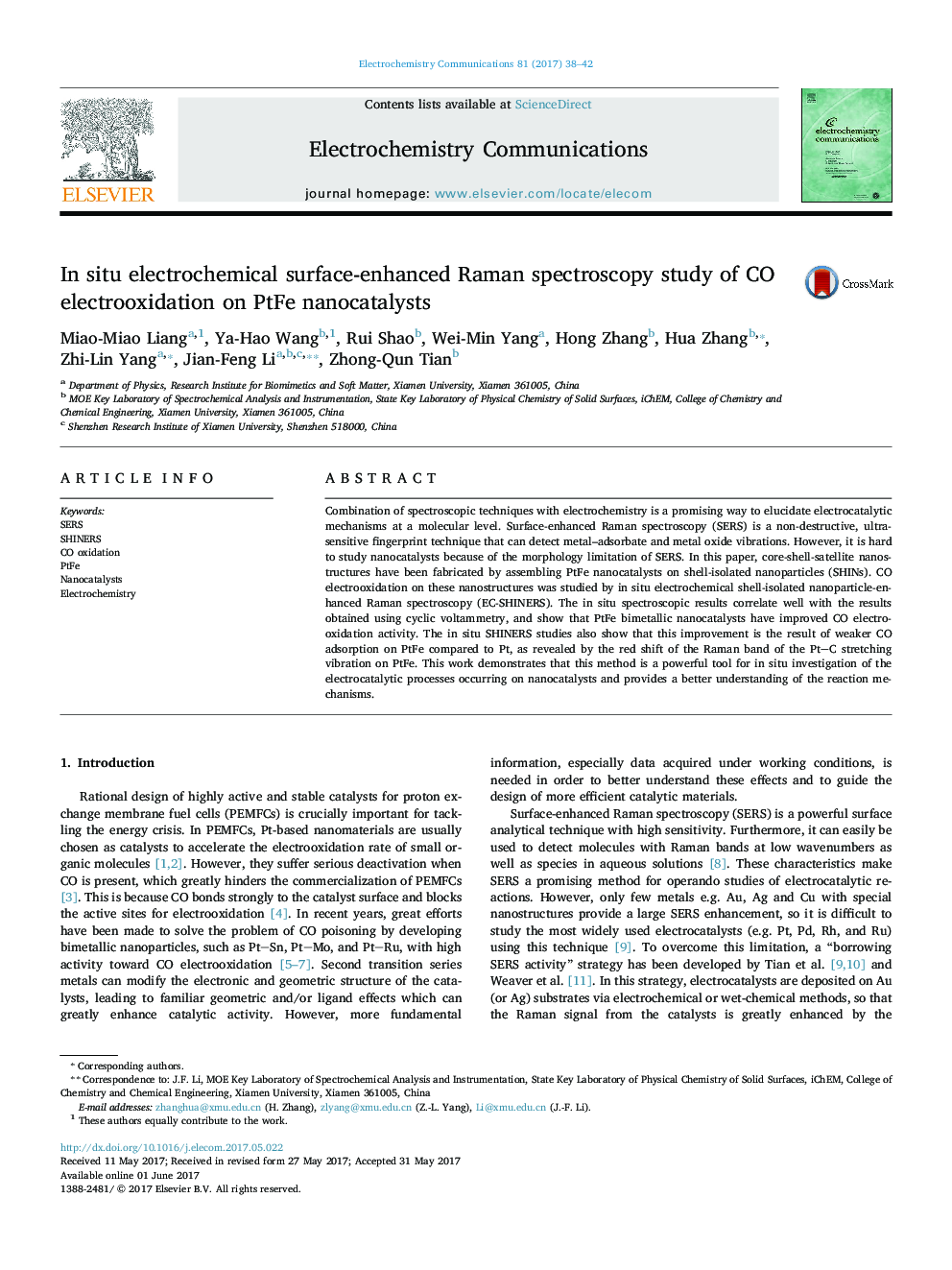| Article ID | Journal | Published Year | Pages | File Type |
|---|---|---|---|---|
| 6469642 | Electrochemistry Communications | 2017 | 5 Pages |
â¢EC-SHINERS is extended to the in situ study of electrochemical reactions on practical nanocatalysts.â¢The activity for CO electrooxidation is greatly enhanced on PtFe bimetallic nanocatalysts compared to Pt.â¢The PtCO stretching bands shift to lower frequencies as the Fe content increases.
Combination of spectroscopic techniques with electrochemistry is a promising way to elucidate electrocatalytic mechanisms at a molecular level. Surface-enhanced Raman spectroscopy (SERS) is a non-destructive, ultrasensitive fingerprint technique that can detect metal-adsorbate and metal oxide vibrations. However, it is hard to study nanocatalysts because of the morphology limitation of SERS. In this paper, core-shell-satellite nanostructures have been fabricated by assembling PtFe nanocatalysts on shell-isolated nanoparticles (SHINs). CO electrooxidation on these nanostructures was studied by in situ electrochemical shell-isolated nanoparticle-enhanced Raman spectroscopy (EC-SHINERS). The in situ spectroscopic results correlate well with the results obtained using cyclic voltammetry, and show that PtFe bimetallic nanocatalysts have improved CO electrooxidation activity. The in situ SHINERS studies also show that this improvement is the result of weaker CO adsorption on PtFe compared to Pt, as revealed by the red shift of the Raman band of the PtC stretching vibration on PtFe. This work demonstrates that this method is a powerful tool for in situ investigation of the electrocatalytic processes occurring on nanocatalysts and provides a better understanding of the reaction mechanisms.
Graphical abstractDownload high-res image (273KB)Download full-size image
